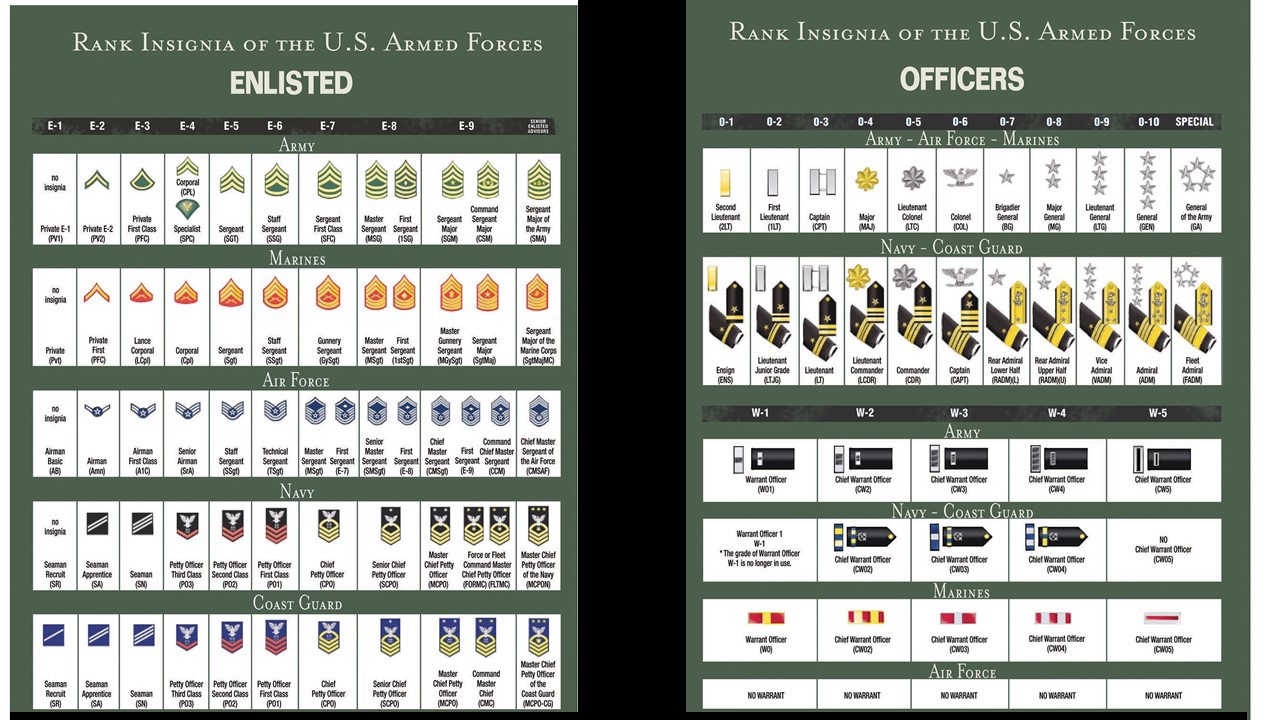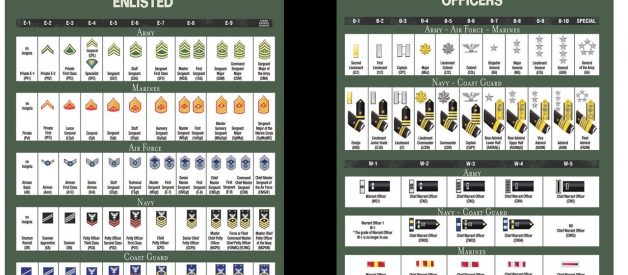 US Military Rank Structure
US Military Rank Structure
Understanding the basic rank structure of your own military service of Army, Navy, Air Force, Marines, or Coast Guard is something that is done by the time basic military training is completed. The trick comes to really recognizing and understanding the rank structure of different US military services and then knowing how that rank structure compares to our own service. Finally, full disclosure, as an Army 2nd Lieutenant I once turned tail and quick timed away from a Navy officer or a Petty Officer or a Cadet (!) when I had no idea if I should salute, receive a salute, or just say, ?hi!? It is very hard to know and recognize all the different ranks.
Understanding US Military Rank Structure #1 ? The Basic Structure Is The Same. All military services follow the enlisted, non-commissioned officer, commissioned officer, and warrant officer structure. Knowing this is extremely valuable because a US Army Captain and a Navy Lieutenant will have similar roles and responsibilities. The one area where all services vary is the role of Warrant Officers. Warrant Officers are traditionally highly technical experts but in some cases they can also lead troops.
Understanding US Military Rank Structure #2 ? Don?t Adopt Other Services Rank Slang. In the US Army, the senior non-commissioned officer in a company is called the ?First Sergeant.? Some First Sergeants allow themselves to be addressed as ?Top,? which is a simultaneous term of respect, recognition, and endearment by the members of that company. The US Marines can call Gunnery Sergeants, ?Gunny,? if they are allowed. The central point of these ?rank slang? uses is that they are unique to each service member?s leadership style and tradition. In my time in the Infantry, a company First Sergeant could be the ?Top? to other NCO?s in the unit, but divine intervention was required if a junior officer, an Army 2nd Lieutenant, called him ?Top.? I spent over two years in my Infantry Company, and he was always the ?First Sergeant.? Reserve these ?rank slang? uses to your services tradition only.
Understanding US Military Rank Structure #3 ? If You Don?t Know Ask & Deliver Correct Salutation and Salute. Sometimes you will encounter ranks that you just do not recognize. I encountered a Canadian Navy Lieutenant Commander once and had absolutely no idea of his rank. When I met him, I gave the greeting of the day and apologized that I did not recognize his rank. He gave me a quick lesson, I saluted, and we smiled and went about our business. Asking questions if you do not recognize a rank, standing professionally and polite, and fully giving each military service its due respect makes an awkward situation into one of learning.
Understanding US Military Rank Structure #4 ? Have Another Service Member Talk About Their Service. Another great practice is to allow a member of another service to come in and discuss their services rank structure, traditions, battlefield history, and other elements that make them unique. I knew what US Navy submarine crews did, but I gained incredible respect for one when I understood the rigors of their operations, their absolutely brutal fatality rate during World War II, and the challenges that it takes to operate a nuclear reactor under water. It is these instances and these stories that make the different US military services know, operate, and understand each other better.
Understanding US Military Rank Structure #5 ? Cheat Sheet For Your Phone. The attached two links below offer rank comparisons of Officers and Enlisted ranks of all the services. Save it on your mobile device for a great cheat sheet to help identify different ranks.
(1) US Military Enlisted & Non-Commissioned Officers Rank Comparison: http://www.monterey.army.mil/517th/img/ranks1_large.jpg
(2) US Military Officers & Warrant Officers Rank Comparison:http://www.monterey.army.mil/517th/img/ranks2_large.jpg
Military rank structure among the US Military Services is a little confusing but it follows the same general structure. By not adopting the rank slang of other service traditions, asking questions, learning from other services, and doing your homework to recognize different ranks, you can change a situation of confusion into one of learning.


